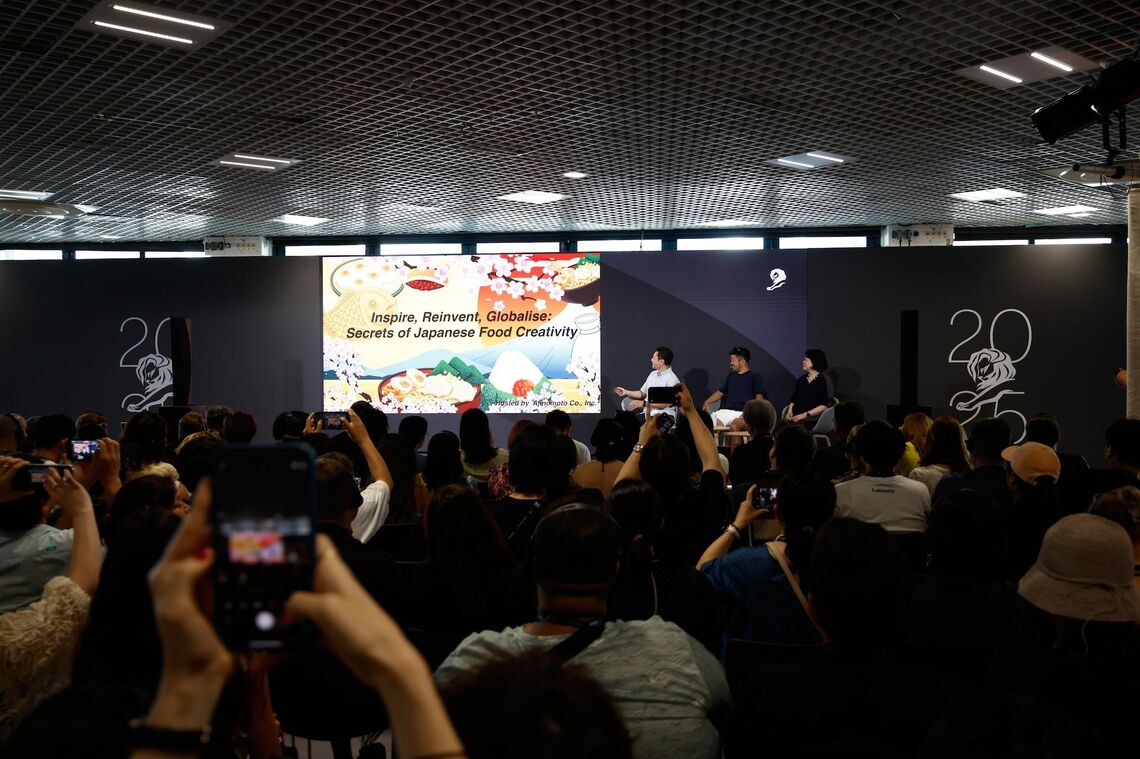
Honda: Welcome to our session today. It's the first day of the Cannes Lions. How are you feeling? Pretty excited? So, people from more than 100 countries come together to Cannes Lions. I can see it's such a mix of people, backgrounds, ideas, but there is one thing we can share in common. That's creativity, right? Of course. That's what Cannes Lion is all about. But I think there is one more thing that we can share: love for food. I mean, who in here doesn't like eating? So, be honest, who already had a rosé wine today? Not yet? Okay. Anyway, today's session will bring you together two of your favorite things: food and creativity. So, let's dive into it.
Opening Movie
Honda:All right, so please welcome our two speakers here. Please, Chef Keisuke Matsushima and Maiko Mori, the president of Ajinomoto Europe. Big applause to them.
Mori: Hello.
Matsushima: Hello.
Honda: So, how are you feeling, Mori-san, Matsushima-san?
Mori: I'm a bit nervous.
Honda: How about you, Matsushima-san?
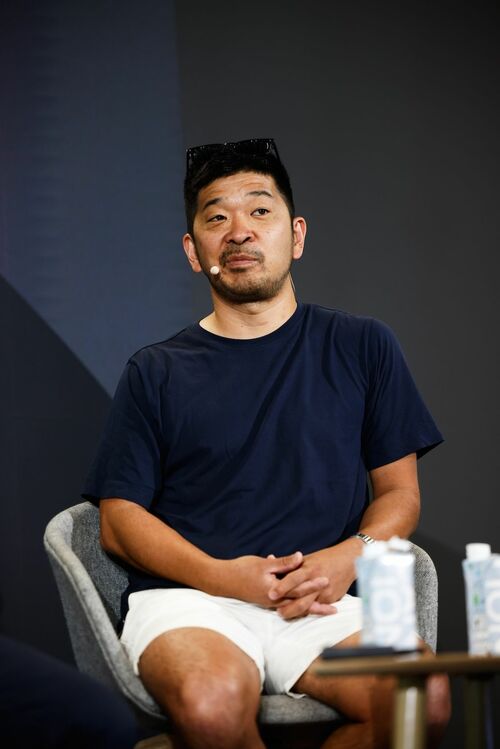
Matsushima: I am relaxed. I am as usual.
Honda: It is your ”JIMOTO”, your local area—where you're based, right?
Matsushima:Yes, it is my local area, so I am not nervous. But I prefer speaking in French.
Honda:In the ranking called Taste Atlas, Japanese food was ranked number two. Which is pretty nice news to us. And as you can see, here are the top 30 countries in the ranking. Is your country on the list? Good. And just for fun, anyone could imagine which country is number 3 and number 1? Any guesses?
Honda:Actually, France is eighth. OK, so here is the answer. Here we go. Number 3 is Greece and number 1 is Italy. So big congratulations to those two countries. Who is from Italy and Greece? Congratulations. So, Mori-san and Matsushima-san, what do you think of this amazing global love for Japanese food?
Matsushima:When I saw this result, I thought like this. Italy is number one. As a person living in Europe, I thought…maybe Italian films might have influenced the spread of Italian food globally. That was my first thought. The reason why Greek food is so popular is because Greece used to occupy all over Europe. They have culture and history. That’s why Greek cuisine has spread widely.
As for Japan’s No 2 position, maybe it is because Japanese contents like Manga helped it. Manga is appreciated all over the world, which contributed to the spread of Japanese food, and resulted in this No2 position. And more than that, the Japanese currency Yen is extremely weak. Japanese people attending the Cannes event are struggling a lot due to the weak Yen.
But because the Yen is so cheap, it gives a fantastic opportunity for overseas tourists to visit Japan, and Japanese ingredients can easily be exported overseas. These two elements are big contributors.
Honda:Thank you very much. How about you, Mori-san? What do you think?
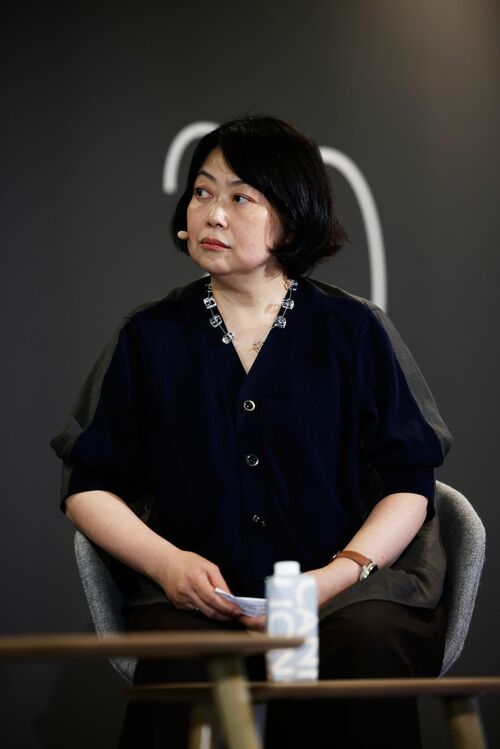
Ajinomoto Co., Inc.(Photo:the Cannes Lions International Festival of Creativity)
Mori: Yes, I will speak a little bit from the perspective of Japan. Japan is a long island located from north to south, surrounded by the sea. So, we have quite a lot of varieties of food ingredients coming from four different seasons and different lands.
As a consequence, the diversity and regionality of food is very common in Japan, I think. Also, historically we really combine these different cuisines not only from domestic food but also from international foods because we really think that the food coming from abroad across the ocean, is very precious and also, we have a lot of curiosity.
Honda: Thank you so much. It's a very interesting ranking for all of you. And speaking of Japanese food, I think both of you have played a really big role in spreading Japanese food around the world.
As a Japanese chef who is making waves here in France…he has a restaurant in Nice, and Ajinomoto as
Japan’s leading food company. Tell us what your journey has been like.
Matsushima: I run a restaurant in France. I was working to show Japanese characteristics in my creation. Rather than just using Japanese ingredients, which is an easy option, I try to use traditional European ingredients and cook with a Japanese twist. Without that, local people won’t respect me.
I am always thinking about how to use local ingredients, how to show my strength as a Japanese chef. Then I came to realise that Umami is the answer, as shown in this book. How do I use Umami in our cooking? Using Umami will create a taste typical to Japanese people.
When I opened my restaurant 20 years ago, I was faced with the reality that there was no concept of Umami in Europe. The term Umami was just starting to be noticed around 20 years ago here. Japan has nearly 100 years of Umami history, while Europe did not. So, I created dishes utilizing Umami. That led me to be recognised here in Europe. Customers often said that it was the food they ate before, but the food I cooked tasted different!
It is because I enhance Umami. I ensured that the original inherent taste of the ingredient is enhanced and discovered. Basically, in Europe, only the 4 tastes- sweetness, sourness, saltiness and bitterness are recognised. It was said that our tongue can only acknowledge these four tastes.
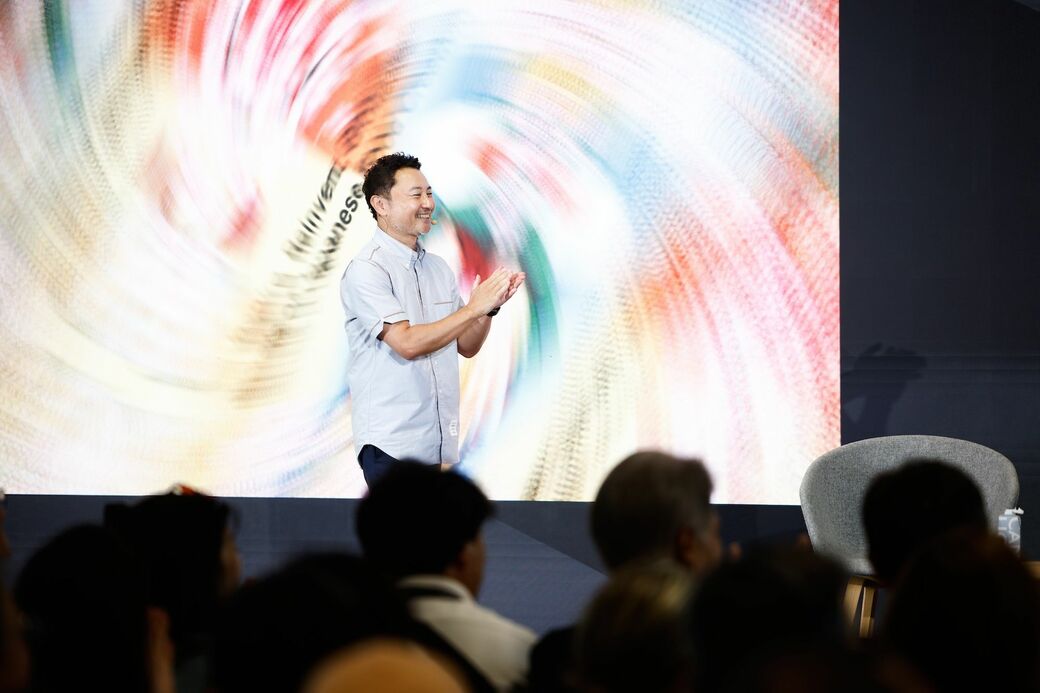
But Japan was insisting that the 5th taste existed from 100 years ago. Finally, 20 years ago, a US university research result confirmed the existence of the 5th taste. That is Umami.
Honda: Thank you very much. How about you, Mori-san?
Mori: As a food company originated from Japan, as Chef Matsushima mentioned, we don't just deliver Japanese food globally. We try to invent cuisine that is really localized. So, what do we do? We first observe what is cooked at home. And then we analyse the taste of the homemade food and then we create this taste into a product.
So, when we do, we do it in each local country, but when we do this, we use our original method, “Deliciousness Technology”. So, we try to figure out the root of the taste of each cuisine in each country. And so, we reconstruct this root of taste into the product. But also, deliciousness technology is not only about taste. Aroma, flavours, texture, as you know, when you taste food, it's not only the taste, all three components are very much important.
So, we try to reconstruct and produce a product which is considered in these three components. And it is not only about deliciousness when we do business as a food producer, because we think the local sustainable production is very important. So, what we do is we try to utilize the local ingredients, support local agriculture by providing byproducts from fermentation and also, we try to develop a manufacturing process to minimize food loss. So, these things are on top of this deliciousness.
And we also try to develop… because Japanese are always running out of time….. ways to shorten the time of cooking without compromising the taste and quality of the food you cook. So, this kind of time efficiency is also put on top as part of providing value to our customers.
Honda:So, it's a very unique technology that only Ajinomoto has.
Mori: Yes, exactly. We developed this kind of technology.
Honda:Thank you so much, Mori-san. OK, so let's get into the fun part, which is the creativity of Japanese food. And to just kick things off, I'm going to show you this little model here, which tells you how it works, what we call “Inspire, Reinvent and Globalise”.
As you know, Japan is an island country. So, over the years, we have taken inspiration from the food around the world. And instead of copying it, we make it the full makeover and send it back to the world again. So why don't we just take an example of food? Which I believe you may love: Ramen. So, who else loves Ramen? Oh, almost everybody. Thank you so much.
So, let me talk about the model with a Ramen example, OK? First of all, “Inspire”. Back in the late 1800s, Chinese immigrants in Japan brought over Ra-mian. It all started there. So, ramen was originally inspired by Chinese food.
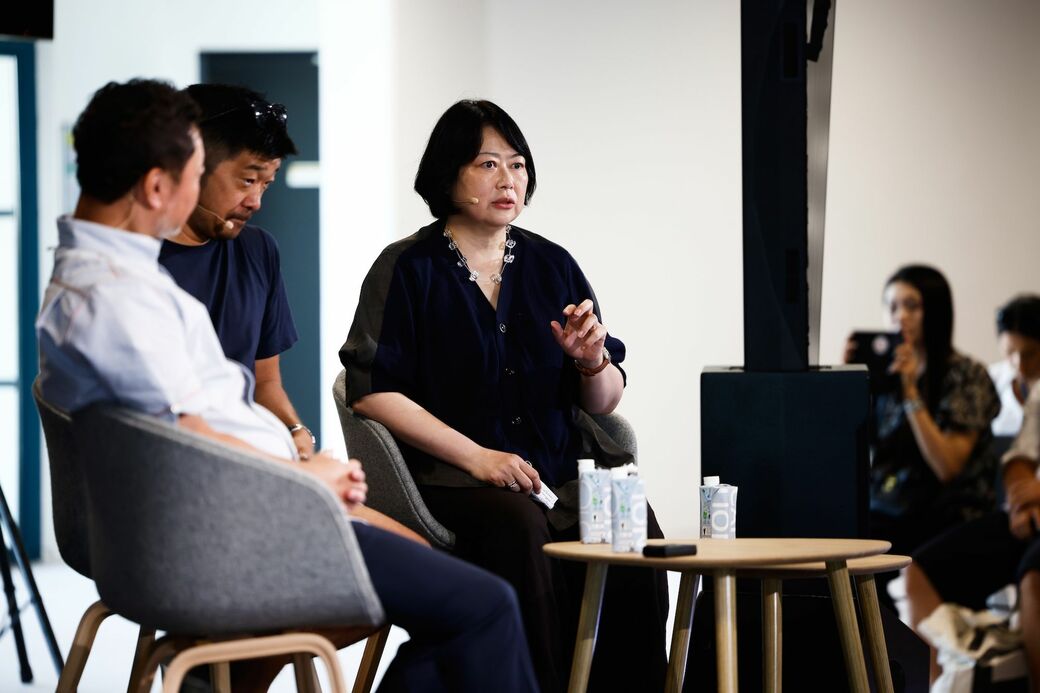
Honda:And next step, “Reinvent”. In the 1950s, Japan went crazy and wild with ramen. Like the city version, Tokyo, Sapporo, Hakata, or like soup versions, miso, tonkotsu ramen, even Curry ramen and many more.
Thick noodle, thin noodle, crazy toppings. So, I mean, everything got the Japanese treatment: flavors, visuals, even how it's served. Honestly speaking, I think even Japanese people have no idea how many types of ramen exist out there. Do you know, Mori-san, how many kinds of ramen there are?
Mori: That’s a difficult question. Thousands?
Honda: Okay. The president of Ajinomoto Europe doesn't even know how many types of ramen exist. So anyway, going forward, “Globalise”,is the final step. So, since 2000, Ramen has gone fully international.
In New York, you will see vegan ramen. In Paris, there is truffle ramen. In Bangkok, you will see Tom Yum ramen. So, this kind of remixed version of Japanese ramen is inspiring the world back. It's like creative karma, right? As you can see, ramen is a perfect example of this creative cycle model. And what is important here is the idea of merging. It's a little space for interpretation.
We are quite open, open to other people's ideas, or like how different cultures might change what we create. There's no single perfect answer, so that creativity keeps evolving. Mori-san and Matsushima-san, what's your thoughts on this creative cycle model?
Matsushima: Well, in Japan there are various cuisines. Here, you can see Tempura, Omelette-Rice, Curry, and so on. There are many different foods. We Japanese ‘Japonise’ all the food coming from abroad.
We have been changing them to the taste suitable for Japanese taste bud. Well, what is ‘Japonise’? In any food, we unconsciously enhance Umami. That is the so-called ‘Japonise’. I mean, make it aligned to the Japanese taste bud. We have accepted many foreign foods, and nurtured them as part of our culture.
The people who enjoy this kind of taste are calm. When the culture reaches a certain maturity level, we meet this taste. When we enjoy this taste, our body and mind reach a well-being state. The power of Umami is not only deliciousness. In Japan, there is a long history of nurturing health alongside the deliciousness of umami, and it plays an important role in both physical and mental well-being.
Mature areas in the world always have some food with Umami. Japan as a country is quite mature. When outside things come into Japan, we have the capability to mature them together with Umami. We use the expression that we make the taste ‘suitable for the Japanese taste bud’. What does it mean? We not only seek deliciousness. We also seek health, working together with Umami. That is the greatness of Umami, which is discovered in Japan.
Today, we are talking about deliciousness here, but it also contributes to our physical and mental health. Umami is extremely important. As the world faces many conflicts today, I want people around the world to experience Japanese cuisine, rich in umami, so that we can propose a more mature and peaceful future. This is also what people overseas expect from Japan.
I would like to continue creating such food. I want food with enhanced Umami to go global, together with Japanese food. There are certain things the overseas people are hoping for Japan to achieve. Many people say to me, ‘I have high hopes for Japan’. I wonder what they are hoping to see? What they are hoping is for us to spread and communicate our core values of the mature Japanese food culture.
Honda:Behind the ‘reinvention’, there is Umami, a kind of technology, right?
Matsushima: There is technology that companies can produce, but that is not all. Umami presses a button on the taste bud on our tongue, and activates biological function within our body, which is within all of us, all humankind. Therefore, we are not only seeking deliciousness.
While enjoying yummy food, our body and mind can relax. That is the power of Japanese food. This power is precious in the current world full of conflicts. In this turbulent time, Japanese food value is most sought after.
Honda: It is so profound. Thank you. How about you, Mori-san as Ajinomoto?
Mori: As a food producer, we are using this creative cycle model as I mentioned, inspire-in the first phase, understanding, analysing the local food and the taste, the ingredients, how they cook. Then we try to reinvent it into a product like Chef Matsushima mentioned.
We also use Umami and the root of taste and then we make it into a new product and we try to provide it in an affordable way so that a lot of people can enjoy it. And finally, we then globalise. We do this creative cycle model in 34 countries worldwide. So let me give you an example: gyoza. So, it's quite similar to ramen. I mean gyoza is a very popular cuisine in Japan and originally, it's from China. Dumplings. But once it was introduced in Japan, we reinvented this pan-fried Japanese Gyoza.
But as an industry, we wanted to globalise this Gyoza, like in the US, Brazil, Asian countries, European countries. So, what we did was re-reinvent Gyoza. So, let's say in Europe. It's more finger food in Europe. It doesn't have to be pan-fried; it could be deep fried. It's finger food and not a main dish like in Japan. Also the fillings are quite different, pork is popular in Japan, but here in Europe it's chicken.
And also, vegetable versions are very common in Europe. It's coming from the culture of the food, culture in Europe and finally it's combined into a local cuisine. Here, gyoza just goes into Lasagne or something like that. So it's kind of how we use this creative model not only in Europe but all over the world. So, we try to globalise using this creative model.
Honda: Thank you so much. So gyoza is just like ramen and the gyoza itself was a kind of reinvention.
Mori: Yes. First reinvented in Japan, but re-invented for other US, Europe, Asian countries.
Honda:(Looking at the screen.)As a Japanese person, I've never seen gyoza like that!
Mori: Yes, exactly.
Honda: Green, red, yellow.
Mori: Yes. It's more like finger food in Europe. In Japan we eat it as a main dish with rice, or beer. But here in Europe it's more like a starter menu.
Honda: I think that's something you respect the local culture. Otherwise, you just push as ‘this is gyoza from Japan. Enjoy Japanese gyoza’. But it's not like that.
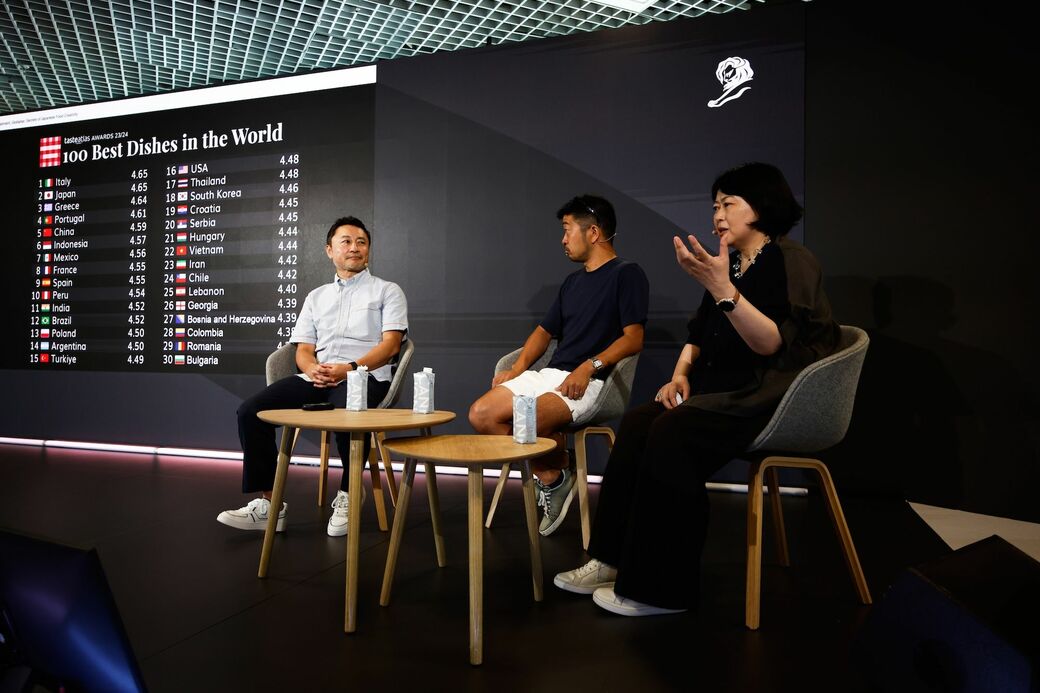
Mori: Exactly. Because I think we really have to localise and respect what people eat in their own country, their culture. So that's how we kind of reorganize our original taste into the local taste.
Honda: Very interesting. Thank you very much, Mori-san, and Matsushima-san for your story. I think it's time to wrap up. So, I'm going to give you a couple of takeaways here. OK, number one, “Be inspired by difference”. Different cultures or even differences themselves can give you a fresh idea. And number two, “Reinvent, don't replicate”. Don’t just copy it. Use your creativity to reimagine it and create something new.
And finally, number three, “Leave margin. Space for your vision to grow”. Don't aim for perfection too much. This little open space, as we explained today, will help your idea to grow bigger and even stronger.
Lastly, one thing is, when you enjoy Japanese food, please remember today's talk. Whether in Japan or anywhere else in the world, it will make it a little bit more delicious. So, thank you very much!
Matsushima: Thank you very much.
Mori: Thank you.
